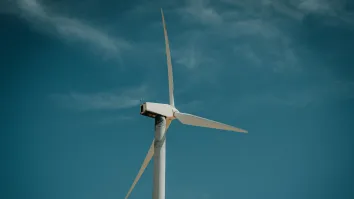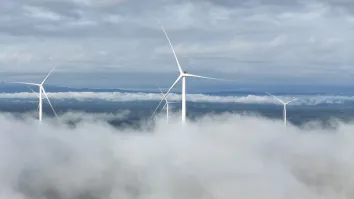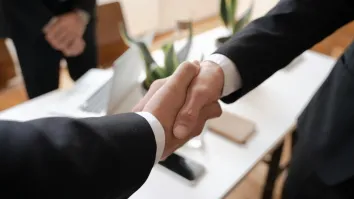
NEFIN Group works double time to catch up on projects
CEO Glenn Lim explains how a delay turned out good as the company aims to reach 667 MW of capacity by 2026.
For NEFIN Group, the next few years will be focused on getting back on track and developing its projects that were due in 2023. A total capacity of 65 megawatts had been stalled because of the surge in prices of solar components.
“We have to intentionally postpone the project so that it arrives at a date where it is more economically feasible to implement,” NEFIN Group CEO Glenn Lim told Asian Power.
The International Energy Agency (IEA) said that the price of steel, copper, aluminium, and polysilicon rose in 2020 due to supply chain challenges, with the average monthly price of polysilicon reaching its peak in 2022 — about four times higher than in 2020.
In China, the price of steel which is a main construction material for utility-scale photovoltaic and onshore wind plants rose by 75%.
But in 2023, the capital costs for utility PV in Asia Pacific declined by 29%, resulting in an average of 23% fall in levelised cost of electricity. Distributed solar saw a 26% decline in cost; the technology is now 12% cheaper than residential power prices, according to Wood Mackenzie.
The decline makes utility solar the cheapest power source in the region, surpassing conventional coal, it added.
So, the delay is not only logical, but a smart move on the part of NEFIN Group.
“The highest priority is to get our capacity online, especially those that we had delayed due to unforeseen market forces over the last few years, as soon as possible,” Lim said. “We want to catch up. By 2026, we want to get to 667 megawatts. So the next two years of catch-up will be actually very steep.”
The company was also awarded a 45-megawatt-peak solar project by Malaysia’s Energy Commission under the Corporate Green Power Programme, which operates as a virtual power purchase agreement (PPA).
The project located in Teluk Intan, Perak, which costs $27.8m (RM130m), starts construction in 2024 and is expected to produce 60,750 MW-hours of power annually, Lim told Asian Power.
How did the company fare in 2023 and what were the key challenges it faced?
We did pretty well. We increased our revenue by 40%. We managed to secure substantial capacity across Asia. The projects, which we expect to start construction this year, will be over 100 megawatts.
In early 2023, we experienced a steep increase in some of the components of solar projects due to the increase in interest rates globally and inflation which made some of our projects not economical. As such, we have to intentionally postpone the project so that it arrives at a date where it is more economically feasible to implement.
Surprisingly, the market was super volatile. Towards the second half of the year, the sudden surge in prices at the beginning nosedived which made our projects financially workable. Now, we have to double our capacity. This means that what was supposed to be done in a year is now postponed to the second half of the year, and you have to compress it.
However, we only have this amount of headcount that we can handle so our people are running twice or thrice their capacity. That’s the problem that we are facing. We don’t want to rush. So some of our projects missed our last year’s target to be operation-ready, and it spilled over to Q1 this year. But we are looking at 95% to be completed by Q1 which spilt over last year. This year, the current pipeline looks very strong and good.
How many projects or megawatts were pushed to Q1 2024?
This number is pretty substantial: around 65 megawatts. This delay is not necessarily a bad thing. To be objective, yes, there was a delay; but due to the sudden huge decrease in the component price, the project became very good. The delay was maybe God’s blessing that luckily, we didn’t start earlier.
The Malaysian government awarded NEFIN with a 45 MWp solar farm project. Can you tell us more about this?
This project has come a long way. We started working with Intel back in December 2016. Along the way, we were hoping that the government enable the virtual PPA where companies like Intel can procure green power, not just through their rooftop, but from a virtual way. And thanks to the new leadership of Malaysia, which enables this policy, and makes it possible for a lot of corporates to achieve their carbon-neutral goals.
What other opportunities or markets could NEFIN Group potentially enter or tap into?
Number one is ASEAN (Association of Southeast Asian Nations) for sure, due to the nomadism of the factories in ASEAN. Indonesia, Vietnam, Philippines, Malaysia, and Thailand, all these are markets for manufacturers to come up. These are good locations for the factories to be. But we also see some unique markets such as the Philippines which has a great demand for power over the next six years from now to 2030, so that is an emerging market for us.
We also see that Taiwan, being a super island, also wants to reduce its reliance on liquefied petroleum gas (LPG). LPG prices over the last 12 to 18 months were rocket-high due to the Russia-Ukraine war. It’s not sustainable to have a single source of that energy to keep the economy. There’s always a need to enable other renewable or alternative energy such that possibly nuclear, wind power, solar and hydropower
Is NEFIN also exploring other renewable sectors?
In China, we invested in battery storage, we do peak demand shaving, load shifting, and demand response. We are exploring some green but at this moment, we don’t think any of this project will come online until 2026. The years 2024 to 2026 will be focused predominantly on solar batteries, energy efficiency, and HVAC (heating, ventilation and air conditioning) optimisation focus.
What would be your priority for the company this year?
The highest priority is to get our capacity online, especially those that we had delayed due to unforeseen market forces over the last few years, as soon as possible. We want to catch up. By 2026, we want to get to 667 megawatts. So the next two years of catch-up will be actually very steep.
That’s actually a test of our company that is only on the asset capacity. But on top of that, we do not want to increase our assets so blindly, but at the end of the day, we are not achieving our customers’ decarbonisation goals. So in our company, we do not measure ourselves based on growth or capacity, but we are looking very strictly at what we do to help our customers decarbonise quicker, cheaper and safer.
$1 = RM4.68

















 Advertise
Advertise







